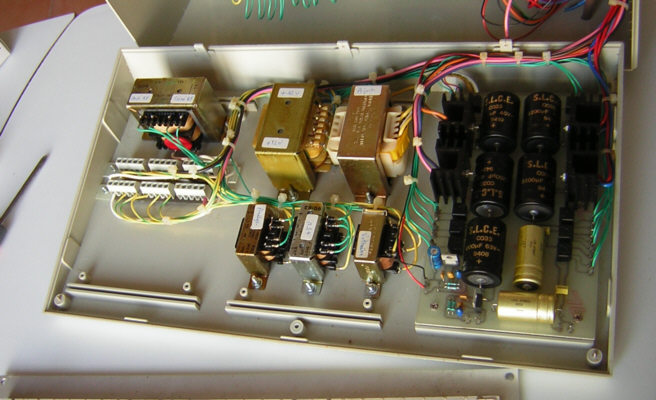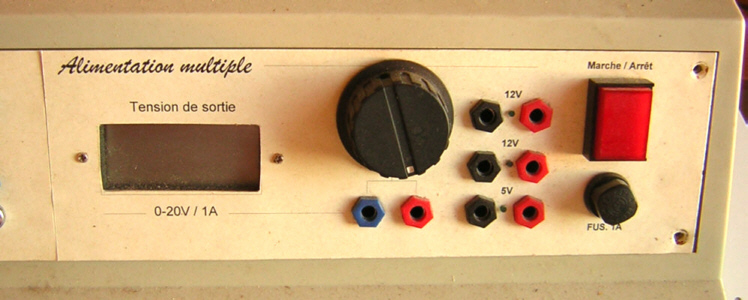There are so many laboratory power supplies! Not easy to tell the difference between a "serious and robust" lab power supply and a "general public" lab power supply. So what can an adjustable 0 to 30 V / 1 A laboratory power supply, with digital display, be worth for such a modest sum as 30 euros? Perhaps not what one would expect from a high-end power supply. But if this power supply is enough for small beginner assemblies, why not? For my part, I attach particular importance to the following points.
Current limiting
It's so practical and so reassuring, to be able to connect a power supply to an assembly of which you are not too sure, and not to have to stand far away, your arm stretched out on the switch... Seriously, it's the kind of function that your power supply absolutely must have. Especially if you often design or troubleshoot an electronic device. Do you want to make a power supply like this yourself? I recommend the L200 regulator, inexpensive and capable of going up to 2A ( example of implementation ). If you already have a power supply, but the latter does not have a current limiting circuit, know that you can add an external one, it is not very complicated to do ( example ).
Ease and speed of adjustment
The output voltage must be able to be adjusted to the desired output value, with a rotary pot (forget the digital control power supply with Plus and Minus button, it's really horrible).
Correct withstand on high current peaks
The responsiveness of the power supply to short current surges (at low frequencies as well as at high frequencies) is not easy to assess if you are not equipped to make this kind of measurement. We must therefore be satisfied with what the manufacturer says in the description of his product, and do without it if he says nothing. A "light" power supply may perform less well on current draws when it is 35 degrees in the room, because of the safety margin reached more quickly.
Current capacity
Pay attention to the values announced by certain manufacturers. Some power supplies are given to be able to deliver a maximum current, but this maximum value is not always possible if the desired output voltage is low. If the power supply is of simple design, the voltage upstream of the regulation circuit is always at its maximum, and an output voltage set to a low value will cause a high heat dissipation to the regulation circuit, thus quickly limiting the current that he can provide. Some power supplies are thus specified as capable of outputting the maximum current... over a period not exceeding 8 hours (of course, without even mentioning the ambient temperature). Suffice to say that it is better to stay away from this type of diet.
Balanced output (dual)
If you practice audio often, your power supply should deliver two output voltages: one negative and one positive (relative to the 0V midpoint). If the two outputs are symmetrical with a common point, that's already very good. But if the two outputs are floating, i.e. completely isolated from each other, it's even better, because you can then mount them in series or in parallel and thus meet more needs (in series for higher voltage, or in parallel for higher current).
Note : A power supply with a single output can be "transformed" into a dual (balanced) power supply by adding a voltage balun circuit ( example ).
Make your own power supply yourself?
Yes why not ? It is perfectly possible to envisage the production of a power supply, with two possible orientations:
- either the power supply will remain permanently in a given realization (a small mixing console for example),
- or the power supply will be used to test new realizations (laboratory power supply).
What voltage(s)? It all depends on the type of achievement you are planning. If you often touch the audio circuits, no doubt that a balanced power supply of +/15 V will be more than useful to you. If you rather touch logic circuits, you will be happy to have available fixed voltages of 3.3 V and 5 V (programmable or non-programmable TTL logic circuits) or even 12 V (voltage accepted by CMOS logic circuits). I for my part built at my beginnings, an experiment box which included several power supplies (all isolated from each other):


Over time and mainly because of its bulk, I abandoned it a bit, in favor of "simpler" power supplies. If you are a jack-of-all-trades, I suggest you acquire or build a power supply with three output voltages -15 V, +15 V and +5 V.